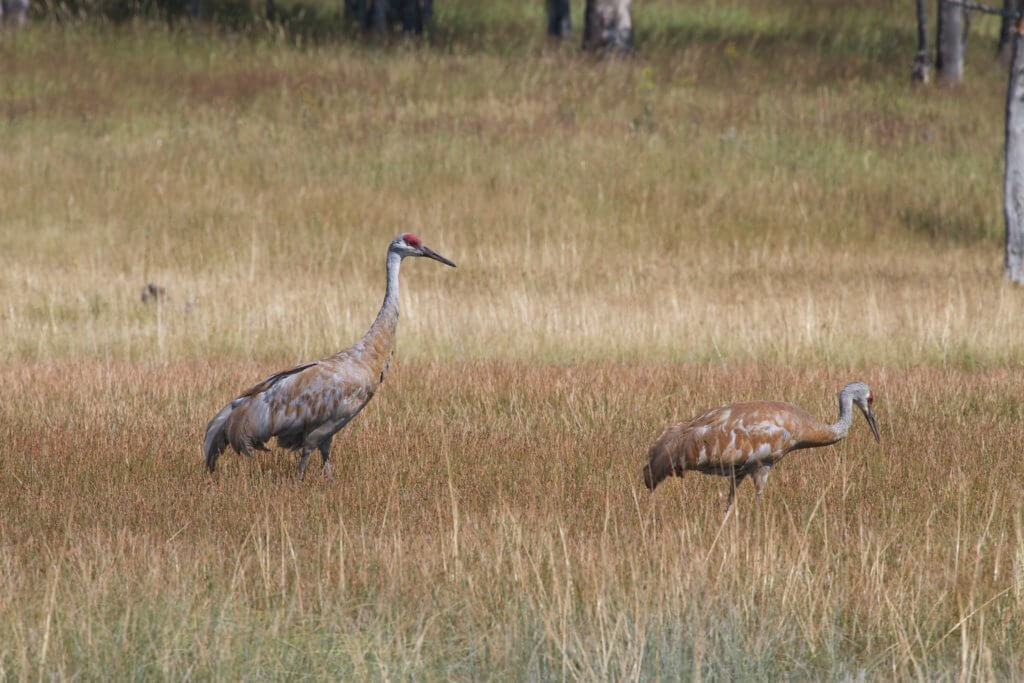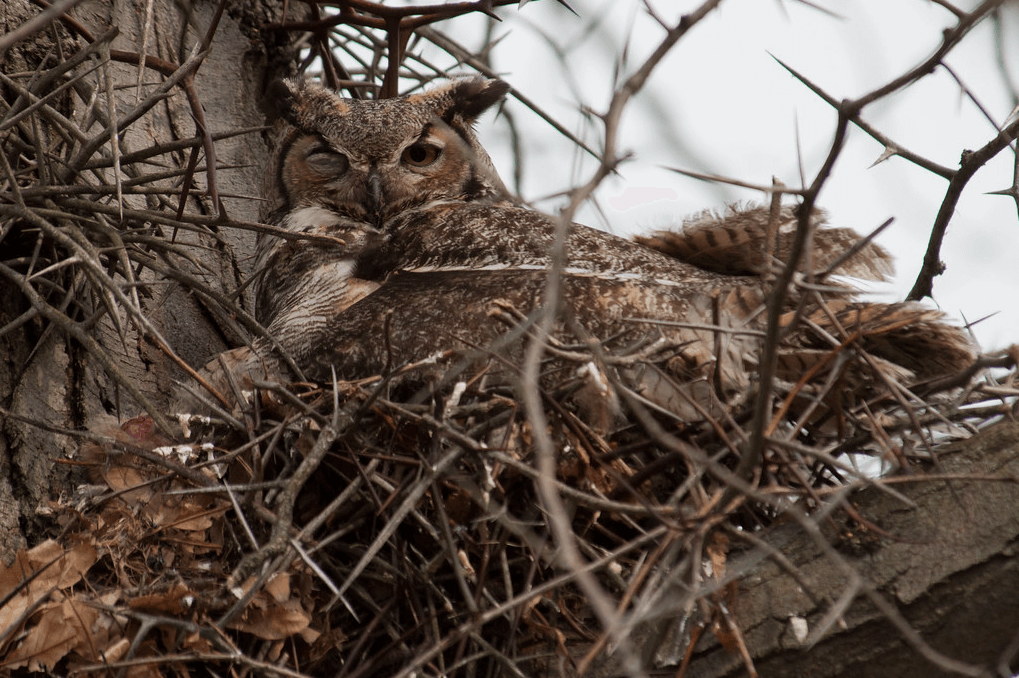by Claire Voris

Photo by Brian Gratwicke, CC 2.0.
I cannot see the cranes this morning, but I can hear them. They are somewhere in the basin of the valley where the yellow, cow-cropped grasses end and the thicket around the water begins. The Sandhills arrived the night before as a wild flurry of sound, drifting in just after dusk when the silhouette of mountains against sky became black on midnight blue and I could not make their bodies out against the dark. I wonder how the cranes knew about the water. Was it the sharp smell of melt? Could they hear the trickle of liquid around rock? Or was it the outline of the snow-fed creek in the moonlight, like the white space between a fingerprint’s arcs and whorls, that was so identifiable from the air? Here, one of the cranes called back to the others, it was safe here once.
On this lazy Sunday just outside Missoula, I can hear only two cranes from the former flock. Perhaps these are the late sleepers, the teenagers, left by the wayside as the larger family group launched back to the migratory grind and headed north to their breeding grounds. Spring is the season of courtship, and what I’m listening to may well be the first pairing of lovers who will mate for life. If this is so, they aren’t worried about being overheard—their flirtation carries across the dry, flat pasture and up the hill to where I stand. One starts, the other interrupts and finishes. How to describe? The verbs I dredge up don’t do their conversation justice. To chortle, clack, and coo are not elegant effects, but sensuous, amorous, ardent—these are the modifiers I am grasping at. I grow tired on my hill trying to come up with ways to bridge the gap between what I hear, seduction, and the limitations of our words for sound; a gargle, even a delicate gargle, lacks the appropriate dose of sex appeal.
The shallow creek that feeds its way, hand over hand, down the rope of its body to the Blackfoot River, has been here for eons. But the water is always cutting new patterns, picking up and depositing sediment in slightly new arrangements with each spring swell. I imagine it like the long-hand of a hurried signature, changing slightly with each new iteration, but always recognizable. How ancient is the bird-memory of a place like this? A ten million-year-old crane fossil was discovered along the Nebraska stretch of the Platte River, where hundreds of thousands of Sandhill Cranes still gather to feed and rest along their migratory route. Today, in western Montana, I listen to the descendants of that bone as they flirt in the bushes. Yes, my long-necked dearest, the species will continue.
The warbling of the Sandhills bounces between sweating mountains and rolls along the valley floor. In this amphitheater, they are impossible to triangulate, another reason this place may have survived in the memory of safe passage. I give up on finding long, gray bodies with red kerchief caps. This way it’s like listening to ghosts, to the echoes of birds from millennia before. When the cranes pause between sweet nothings I catch myself wondering if I’d heard anything at all. Perhaps I had just willed a love story into the barren pre-green spring. The wind rustles the stalks of last year’s growth around my feet. I stare beyond the naked but soon-to-bud thicket, and I listen hard. Without crane song, there is only time, water, wind—the elements that persist regardless if the mated pair and I were here to notice. I turn away, walk back toward my responsibilities in places where none of these elements exert so hard a pull. As I do, the Sandhills begin again. It is a particular relief of spring, I think, to overhear two lovers celebrate the coming of the season.
Claire Voris is a graduate student at the University of Montana. She will be graduating this spring with her MFA in creative nonfiction writing.
This article was originally published in the Spring/Summer 2017 issue of Montana Naturalist magazine, and may not be reproduced in part or in whole without the written consent of the Montana Natural History Center. ©2017 The Montana Natural History Center.
Click here to read more articles from Montana Naturalist magazine.
Want to learn more about our programs? Sign up for our e-newsletter! You can also become a member and get discounts on our programs as well as free reciprocal admission to 300+ science centers in North America!












